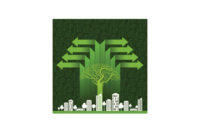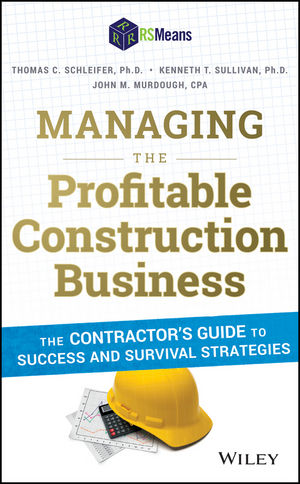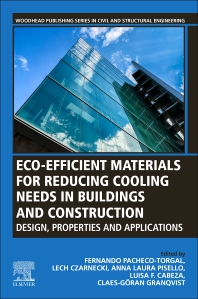Teachable Moments: Re-Greening the Sidwell Friends Middle School Roof
Guided by its Quaker values, the prestigious Sidwell Friends School is committed to practicing responsible environmental stewardship. Sidwell’s Middle School Building is the first K-12 school in the United States to earn a LEED Platinum rating and the first-ever LEED Platinum building constructed in Washington, D.C.

Guided by its Quaker values, the prestigious Sidwell Friends School is committed to practicing responsible environmental stewardship. Sidwell’s Middle School Building is the first K-12 school in the United States to earn a LEED Platinum rating and the first-ever LEED Platinum building constructed in Washington, D.C.
One of the school’s storm water management features is a living roof, which was initially planted in 2005.
Because the school’s curriculum is grounded in teaching students about the natural world and their relationship to it, the 7,853-square-foot green roof acts as a living laboratory; upper and middle school science teachers and students use the site for hands-on learning and research.
After the initial planting of the roof five years ago, however, the plants - while native to the region - unfortunately did not adapt well to the “non-native” conditions of this rooftop.
 In 2009, Sidwell
Friends School
officials made the decision to re-green the roof of the Middle School. They
commissioned Brooklyn, Md.-based Furbish Co. to redesign the vegetated system
for more-reliable coverage using plant varieties more fitting for the
non-irrigated, shallow profile and extreme rooftop conditions - namely, sedum
varieties proven successful on extensive living roofs in the mid-Atlantic
region.
In 2009, Sidwell
Friends School
officials made the decision to re-green the roof of the Middle School. They
commissioned Brooklyn, Md.-based Furbish Co. to redesign the vegetated system
for more-reliable coverage using plant varieties more fitting for the
non-irrigated, shallow profile and extreme rooftop conditions - namely, sedum
varieties proven successful on extensive living roofs in the mid-Atlantic
region.
In fall of 2009, Furbish Co. removed all of the soil from the existing roof and replaced it with a different media blend designed specifically to enhance plant growth and drainage within a rooftop environment. Furbish Co. fully replanted the Middle School roof in March 2010 with proven materials. Supplementing the workhorse sedum varieties, various accent plants - Schizachyrium scoparium, Allium cernuum, Aster ericoides, Aster oblongifolius “October Skies,” Echinaciea purpurea, Liatris spicata - were introduced to embrace diversity in the micro habitat and add visual appeal.
 The plugs were hand-planted at one-foot centers, allowing
room for growth. Furbish Co.’s planting crew also mounded up areas of deeper
soil in high-interest locations to hold perennial accent plantings such as
native grasses. “The most interesting part was that Furbish Company spread
cuttings randomly across the soil to fill in gaps between plugs,” said Steve
Sawyer, Sidwell Friends School
plant manager. “These look like half-inch-long pieces of succulent plant leaves
that are just lying on the surface. The cuttings will eventually root and help
create a ‘green’ carpet.”
The plugs were hand-planted at one-foot centers, allowing
room for growth. Furbish Co.’s planting crew also mounded up areas of deeper
soil in high-interest locations to hold perennial accent plantings such as
native grasses. “The most interesting part was that Furbish Company spread
cuttings randomly across the soil to fill in gaps between plugs,” said Steve
Sawyer, Sidwell Friends School
plant manager. “These look like half-inch-long pieces of succulent plant leaves
that are just lying on the surface. The cuttings will eventually root and help
create a ‘green’ carpet.”
Furbish will return over a two-year period to ensure proper plant establishment and maintain the vegetated roof system - feeding, weeding and monitoring conditions for long-term viability. Successful maintenance is the result of anticipating problems and preventing their occurrence. The sooner plants are naturalized and fully covering the roof, the quicker maintenance protocols can be reduced.
Now that the roof has been replanted, the students are back outside taking notes on the issues surrounding water reuse and conservation and the urban heat island effect. As an unforeseen bonus, Sidwell Friends School was able to use the replanting of the roof as a teachable moment - an example of the lessons learned when experimenting with new approaches.

Vegetated Area: 7,853 square feet
Project Team:
Design/Install: Furbish Company LLC
Green Roof Plant Specialist: Ed Snodgrass, Emory Knoll Farms
Client: Steve Sawyer, Sidwell Friends School
Materials:
Perforated Aluminum Edging: Resource Conservation Technologies
Ballast Stone: Skyland USA
Rooflite Extensive Growth Media: Skyland USA
Rooflite Drainage Media: Skyland USA
Sedum Plugs and Cuttings: Emory Knoll Farms

Guided by its Quaker values, the prestigious Sidwell Friends School is committed to practicing responsible environmental stewardship. Sidwell’s Middle School Building is the first K-12 school in the United States to earn a LEED Platinum rating and the first-ever LEED Platinum building constructed in Washington, D.C.
One of the school’s storm water management features is a living roof, which was initially planted in 2005.
Because the school’s curriculum is grounded in teaching students about the natural world and their relationship to it, the 7,853-square-foot green roof acts as a living laboratory; upper and middle school science teachers and students use the site for hands-on learning and research.
After the initial planting of the roof five years ago, however, the plants - while native to the region - unfortunately did not adapt well to the “non-native” conditions of this rooftop.

Furbish Co. was commissioned to redesign the
vegetated system for more-reliable coverage using plant varieties that would
thrive in the rooftop environment.
In fall of 2009, Furbish Co. removed all of the soil from the existing roof and replaced it with a different media blend designed specifically to enhance plant growth and drainage within a rooftop environment. Furbish Co. fully replanted the Middle School roof in March 2010 with proven materials. Supplementing the workhorse sedum varieties, various accent plants - Schizachyrium scoparium, Allium cernuum, Aster ericoides, Aster oblongifolius “October Skies,” Echinaciea purpurea, Liatris spicata - were introduced to embrace diversity in the micro habitat and add visual appeal.

Plants were chosen that could cope with the
non-irrigated, shallow profile and extreme rooftop conditions. Several
varieties of sedum mere used, along with various accent plants including Allium
cernuum, Aster ericoides, Aster oblongifolius “October Skies,” and Liatris
spicata.
Furbish will return over a two-year period to ensure proper plant establishment and maintain the vegetated roof system - feeding, weeding and monitoring conditions for long-term viability. Successful maintenance is the result of anticipating problems and preventing their occurrence. The sooner plants are naturalized and fully covering the roof, the quicker maintenance protocols can be reduced.
Now that the roof has been replanted, the students are back outside taking notes on the issues surrounding water reuse and conservation and the urban heat island effect. As an unforeseen bonus, Sidwell Friends School was able to use the replanting of the roof as a teachable moment - an example of the lessons learned when experimenting with new approaches.

Sidwell Friends School is a LEED Platinum
building with a living roof that serves as a living laboratory for teachers and
students. School officials made the decision to re-green the roof, and the
project was completed approximately six months later.
Sidebar: Just the Facts
Project: Sidwell Friends School, Washington, D.C.Vegetated Area: 7,853 square feet
Project Team:
Design/Install: Furbish Company LLC
Green Roof Plant Specialist: Ed Snodgrass, Emory Knoll Farms
Client: Steve Sawyer, Sidwell Friends School
Materials:
Perforated Aluminum Edging: Resource Conservation Technologies
Ballast Stone: Skyland USA
Rooflite Extensive Growth Media: Skyland USA
Rooflite Drainage Media: Skyland USA
Sedum Plugs and Cuttings: Emory Knoll Farms
Looking for a reprint of this article?
From high-res PDFs to custom plaques, order your copy today!





